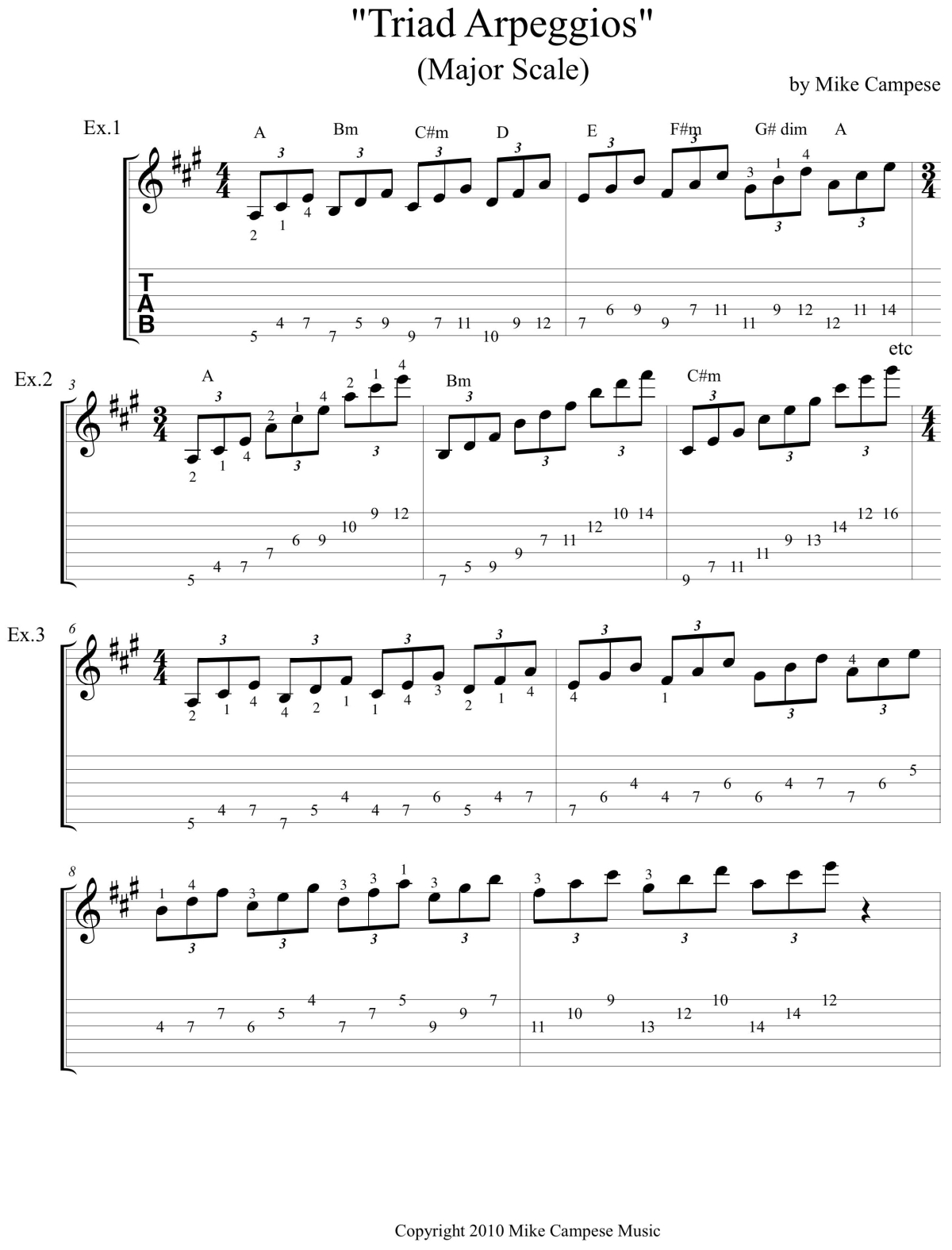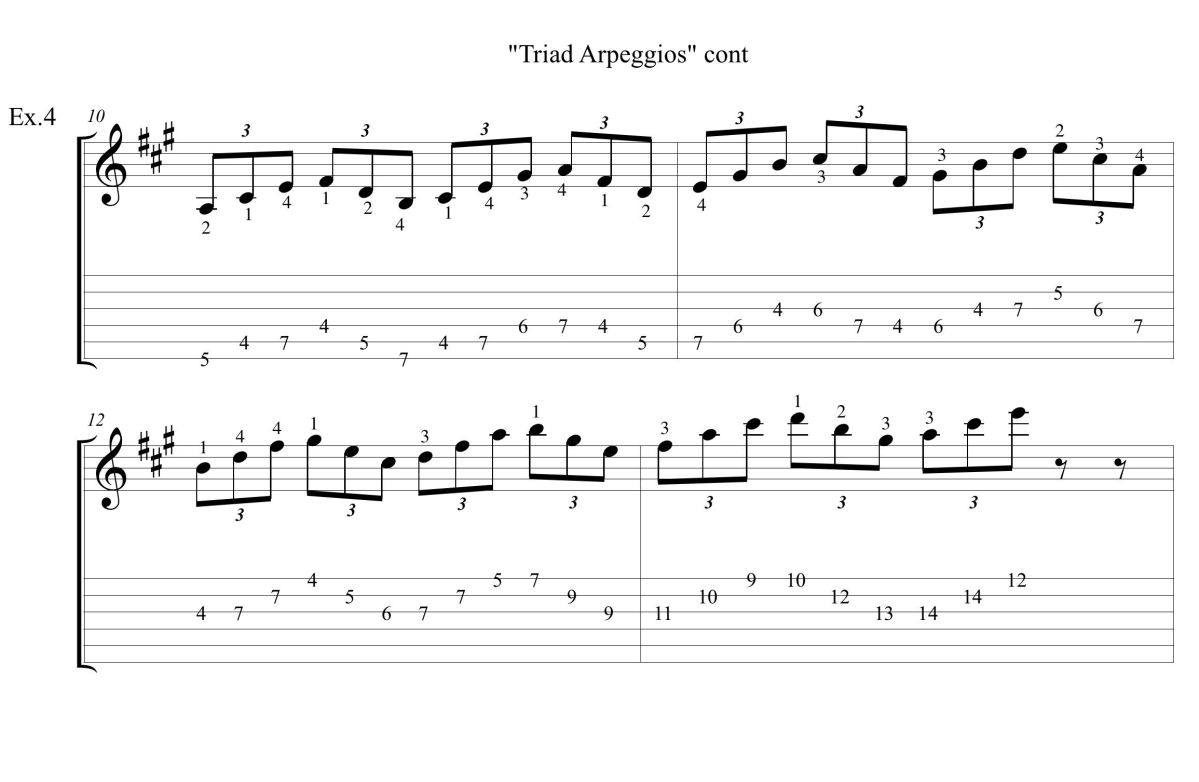Happy New Year! In this lesson I will be showing you ways to practice your triad arpeggios and apply them to your writing and playing. It is very important to know your basic triads, they are the foundation on which all other chords are built from. A triad arpeggio is a 3-note chord arpeggiated, meaning the notes are played separately. There are four main triads you have to know, Major (1, 3, 5), minor (1, b3, 5), Diminished (1, b3, b5) and augmented (1, 3, #5). In this section we won't be covering the augmented triad, I will be showing you the triads built from the major scale.
The important thing is to know where to use these triad arpeggios; they can help make your playing more melodic if you apply them. You don't have to play the full arpeggio up and down; it does sound cool at blazing speeds though. If you are soloing over a progression you should be able to hear the changes even if the changes are not even playing. Over time you should memorize the notes in all the triads in all 12 keys all over the fingerboard.
Example 1 is a harmonized major scale in the key of A major (A, B, C#, D, E, F#, G#), played with triad arpeggios. These are played on two strings at a time and you should memorize the chord scale pattern, (major, minor, minor, major, major, minor, diminished). This is the same in all major keys; in the key of A major the chords will be (A, Bm, C#m, D, E, F#, G# dim). All the examples I will be showing you are based on this. You can use the sweep picking or the alternate picking technique to play these arpeggios.
MP3 - Example 1
Example 2 shows that you can create three octave arpeggios If you move the same arpeggio shape up the neck off the root notes. Here I have an A major arpeggio (A, C#, E), a B minor arpeggio (B, D, F#) and a C# minor arpeggio (C#, E, G#) moving up the neck. Be sure to continue up the neck with the other arpeggios. It will make it a lot easier to play if you use the same fingerings.
MP3 - Example 2
In Example 3 we are staying in one position and playing all the arpeggios up the neck from the A major scale. Be sure to play this backwards as well and all over the neck. You might want to follow some of the fingerings supplied.
MP3 - Example 3
Example 4 is the same idea as the previous example, but these are up and down triads. The first triad ascends and then the second one descends, repeating this movement up the scale. This is a good workout for both hands.
MP3 - Example 4


Be sure to make up your own triad arpeggio ideas! I use them in my music a lot, you can check out my CDs and order them right off this site. Visit mikecampese.com for more information.
Mike Campese is an all-around music performer, session artist and teacher competent in many musical styles, electric and acoustic. He has studied at G.I.T. (Honors Graduate), and with Paul Gilbert, Norman Brown, Stanley Jordan, Scott Henderson and Keith Wyatt.